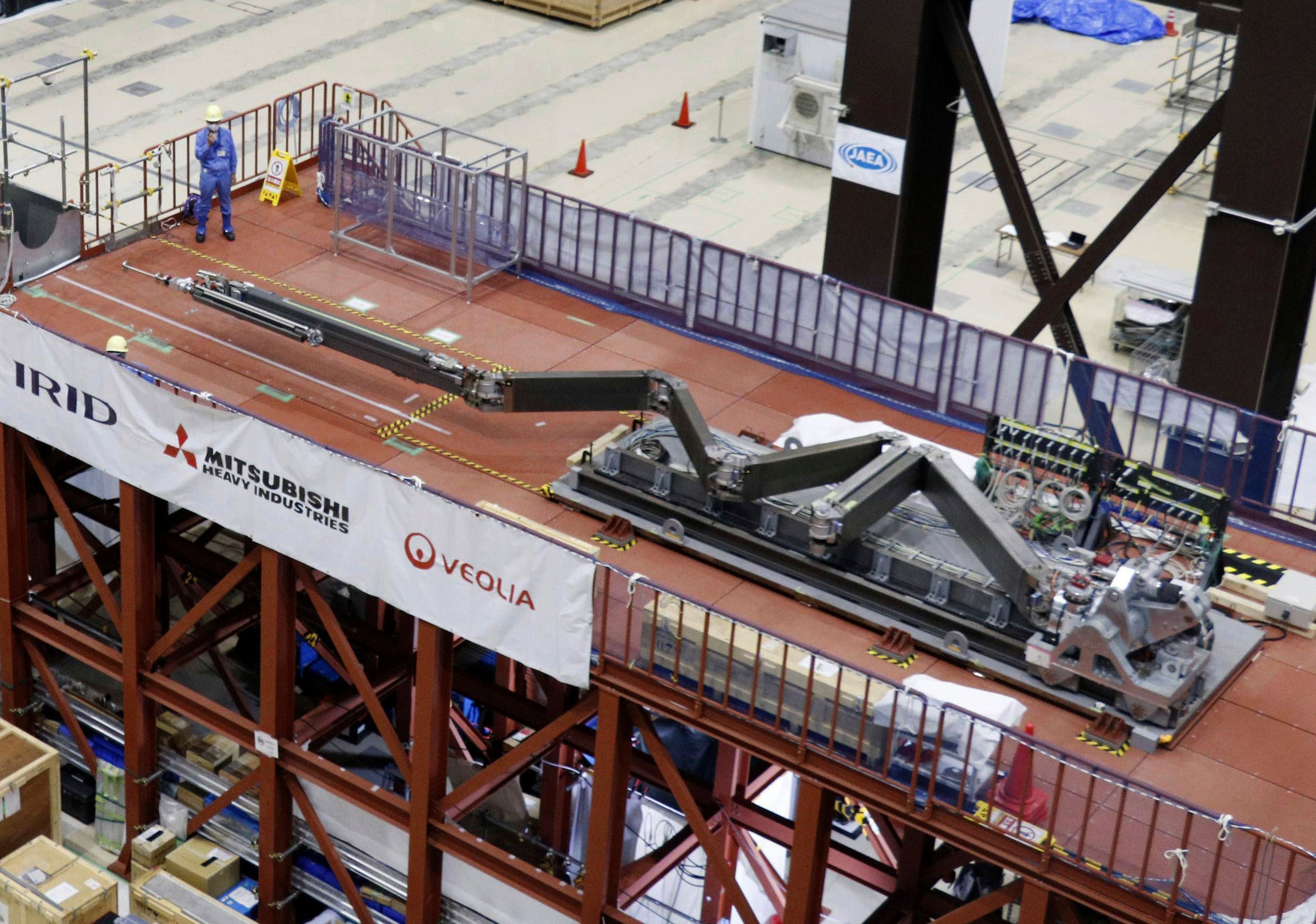More than 13 years after the worst nuclear disaster since Chernobyl, Tokyo Electric Power Co. has started to remove melted radioactive fuel at the bottom of one of the wrecked Fukushima reactors. The Japanese utility began the process at Fukushima Dai-ichi Nuclear Power Plant’s reactor No. 2 on Tuesday, it said in a statement. The plant suffered a meltdown in 2011, after a massive earthquake and tsunami overwhelmed the facility and led to a loss of backup electricity.
The operation marks the beginning of the most challenging part of the plant's decades-long decommissioning. The mission was initially scheduled to begin on Aug. 22 but was suspended when workers noticed that the 5-foot pipes they were using to push the robot into the reactor had been arranged in the wrong order, TEPCO said. The equipment was reassembled in the right order for Tuesday's attempt, the company said.
A robotic mission to retrieve a sample of melted radioactive debris from Fukushima Daiichi’s reactor resumed on Tuesday, marking a crucial step in the decades-long decommissioning process. The “pilot extraction operation” has started, said Tokyo Electric Power Company (Tepco) in a statement.
A 9.0 magnitude quake and tsunami ravaged parts of Japan’s northeastern coast on 11 March 2011, killing about 20,000 people. When the tsunami struck, three of the six reactors at the Fukushima plant were active, causing them to melt down. The resulting debris is extremely radioactive, requiring Tepco to create special robots that can withstand the high levels of radiation.
The extendable robot, nicknamed “telesco”, aims to collect a tiny fragment of the spent fuel debris, estimated to be around 880 tonnes, to inform future cleanup methods.
The operation, initially delayed due to a technical issue, involves inserting the robot into the damaged reactor to collect a sample using a device equipped with tongs.
The mission, resuming after three weeks, is expected to last around 14 days, with the robot operating remotely.
The mission to collect a sample from the plant was supposed to start on 22 August, but it was delayed after workers found that the pipes used to guide the robot were in the wrong order and couldn’t be fixed in time.
Telesco is designed to collect a piece of melted fuel from inside of the Unit 2 damaged reactor. It can extend up to 22m to reach the target area.
The mix-up, which Tepco called a “basic mistake”, triggered disappointment and raised concerns from officials and local residents. Industry minister Ken Saito ordered Tepco president Tomoaki Kobayakawa to conduct a thorough investigation of the cause and preventive steps before resuming the mission, stating, “we must ensure that such a basic mistake does not happen again”.
The pipes were brought into the reactor building in July, but nobody checked them until the problem was discovered. The president of the plant’s operator, Tepco, admitted that the mistake was due to a lack of attention and communication between workers.
The goal of the operation is to bring back less than 3g of fatally radioactive fuel that remain in three reactors.
Experts highlight the significance of this operation, as the retrieved sample will provide vital data for developing future decommissioning methods and necessary technology. “This sample will help us understand the condition of the melted fuel and how to remove it safely,” said a nuclear expert.
However, critics argue that the 30 to 40-year cleanup target set by the government and Tepco is unrealistic, with no specific plans for the full removal and storage of the melted fuel debris. “The lack of a clear plan and timeline raises concerns about the project’s feasibility,” said a local resident.
The government and TEPCO have set a 30- to 40-year target for the cleanup, despite criticism that the timescale is unrealistic. No specific plans for the full removal of the melted fuel debris or its storage have been decided.
TEPCO originally planned to start its first trial removal on August 22, aiming to collect just three grams (0.1 ounces) for analysis -- if the extraction process is successful.
But the company had to stop the work at a preliminary stage after detecting a problem involving the installation of the necessary equipment.
TEPCO deployed two mini-drones and a “snake-shaped robot” into one of the three nuclear reactors in February, as part of the preparations for the removal task.
In May, officials unveiled a robot designed to assist in removing the melted fuel. The robot is being deployed into contaminated areas through pipes, using telescopic tongs to remove small amounts of radioactive debris.
The operation is a delicate and complex one, with risks associated with radiation exposure and potential damage to the reactor structure. TEPCO has put in place a number of safety measures, including rigorous training for the operators and the use of specialized robots.
The cleanup operation will have a significant impact on the lives of those living in the region. The residents of Fukushima are still dealing with the long-term effects of the disaster, including displacement, health problems, and economic hardship. It is hoped that the cleanup operation will help to bring a sense of normalcy to the region.
This operation has been a long time coming and is a pivotal step towards the ultimate goal of decommissioning the Fukushima Daiichi plant. The success of this operation will be crucial for determining the feasibility of future cleanup efforts. The Japanese government and TEPCO are determined to see this project through, but the path ahead is fraught with challenges. It remains to be seen whether this operation will be successful and what impact it will have on the future of the Fukushima region.

















